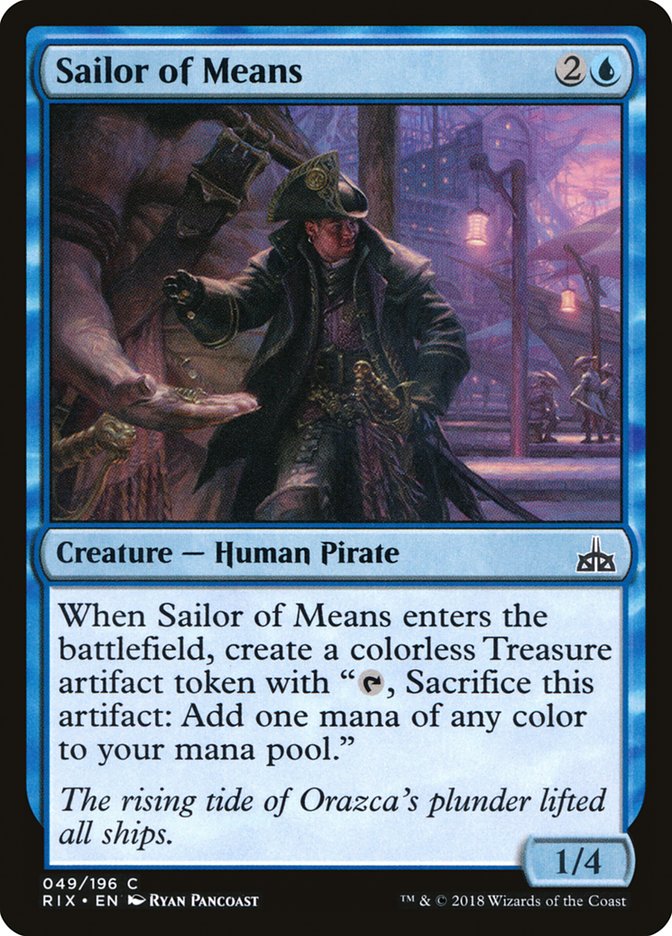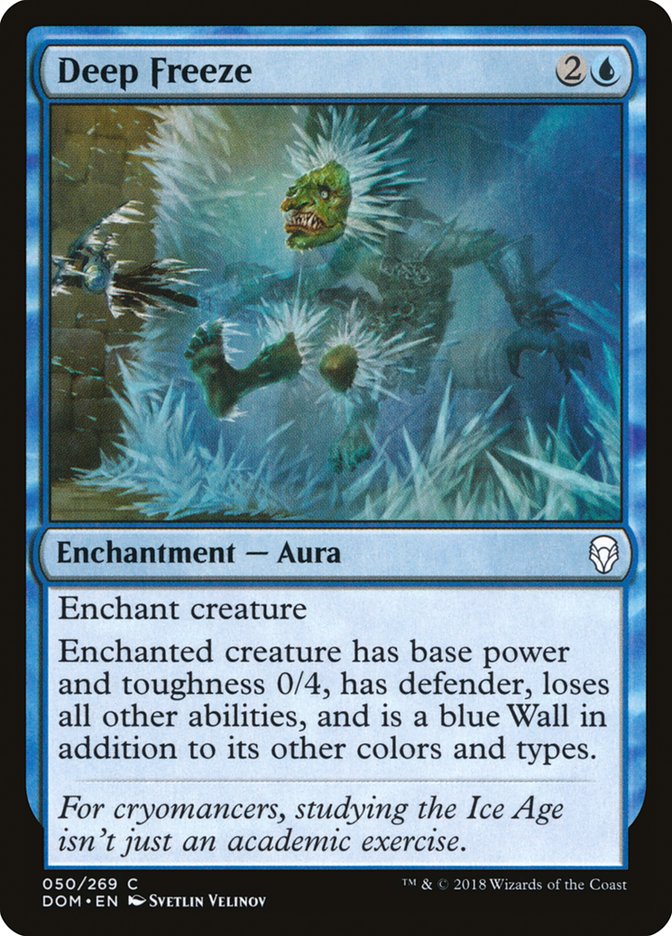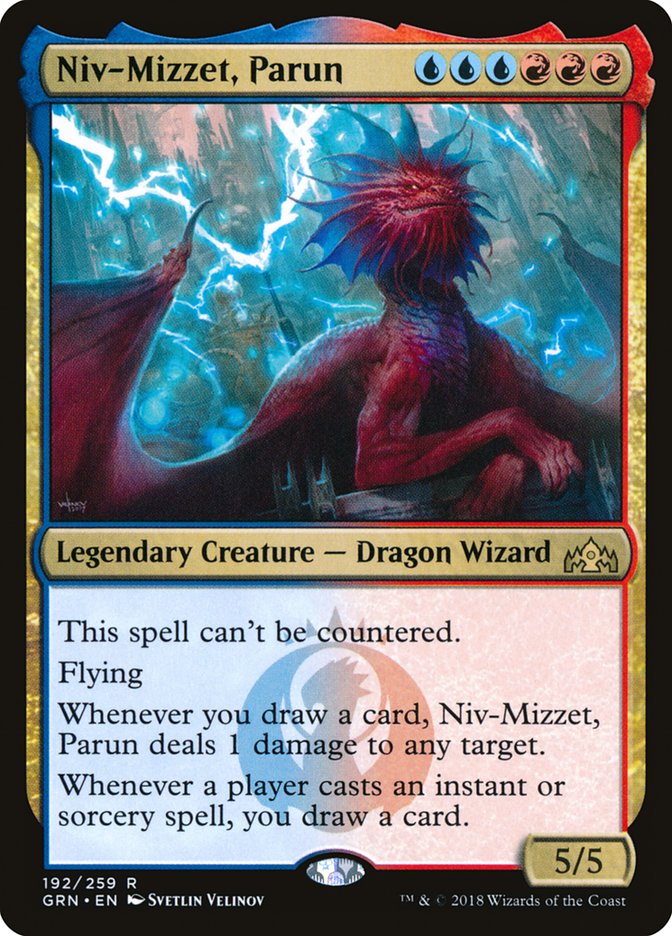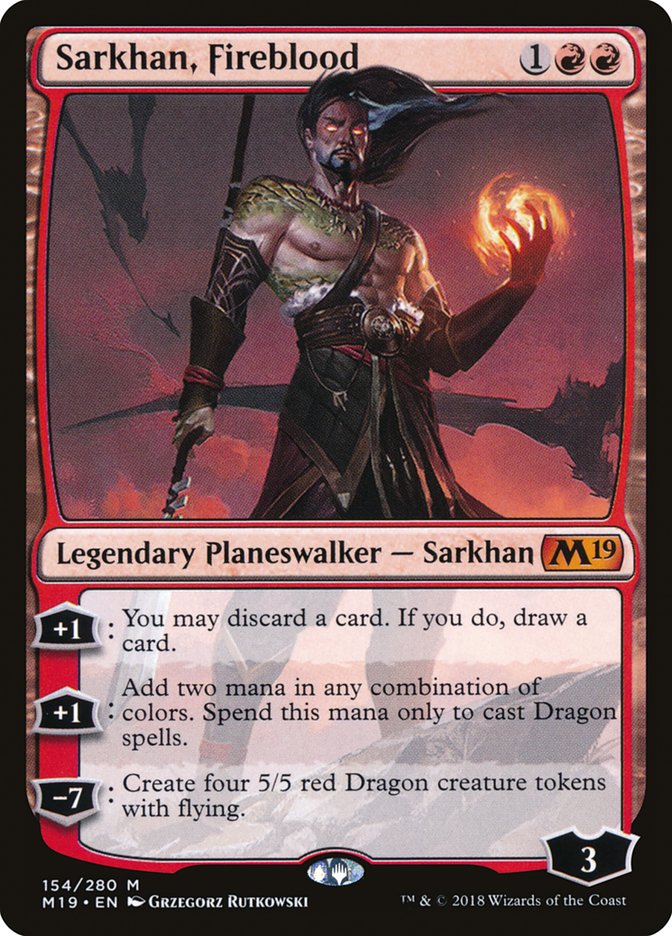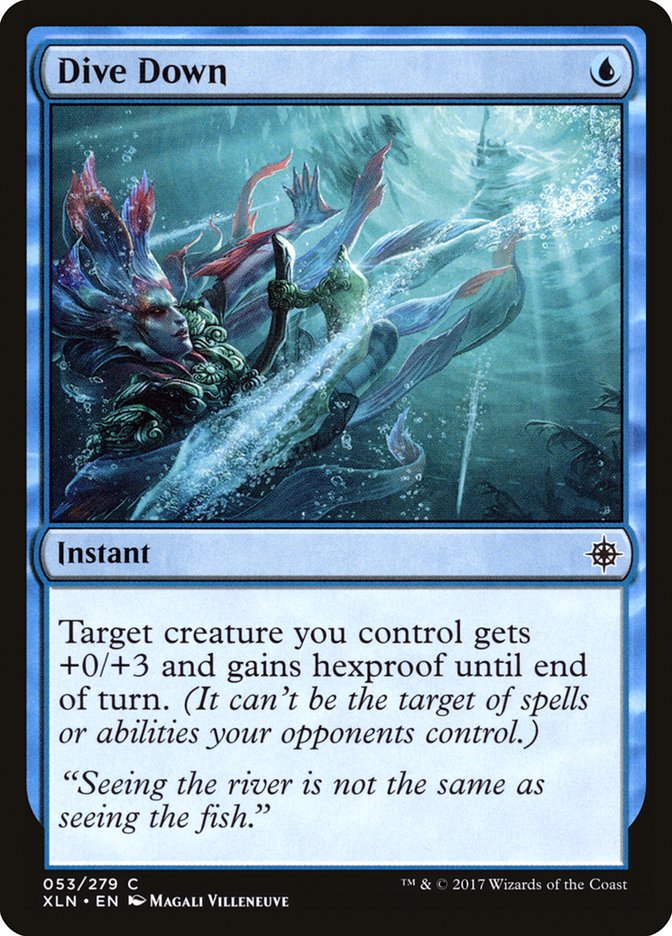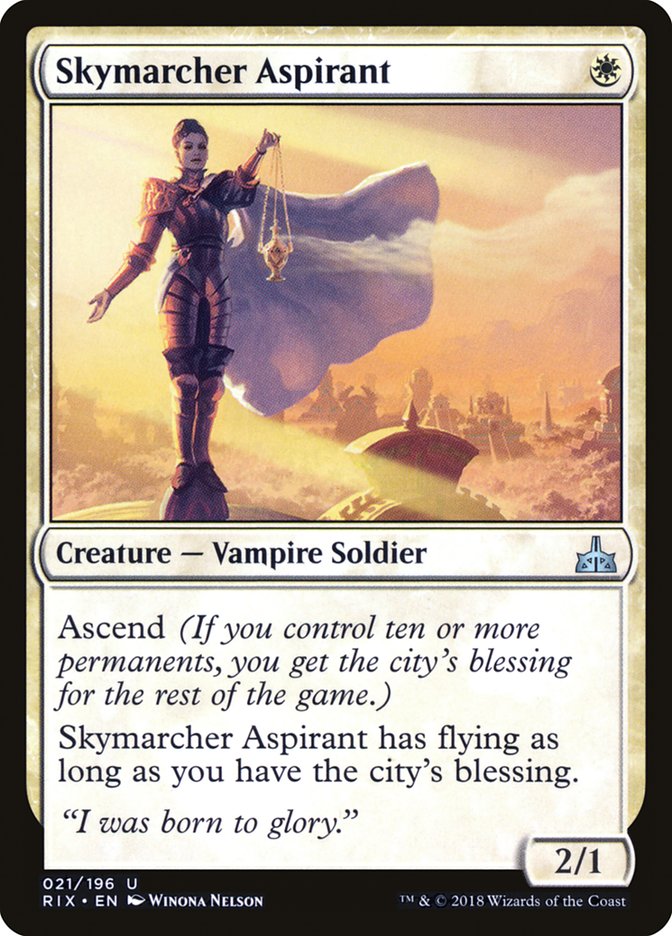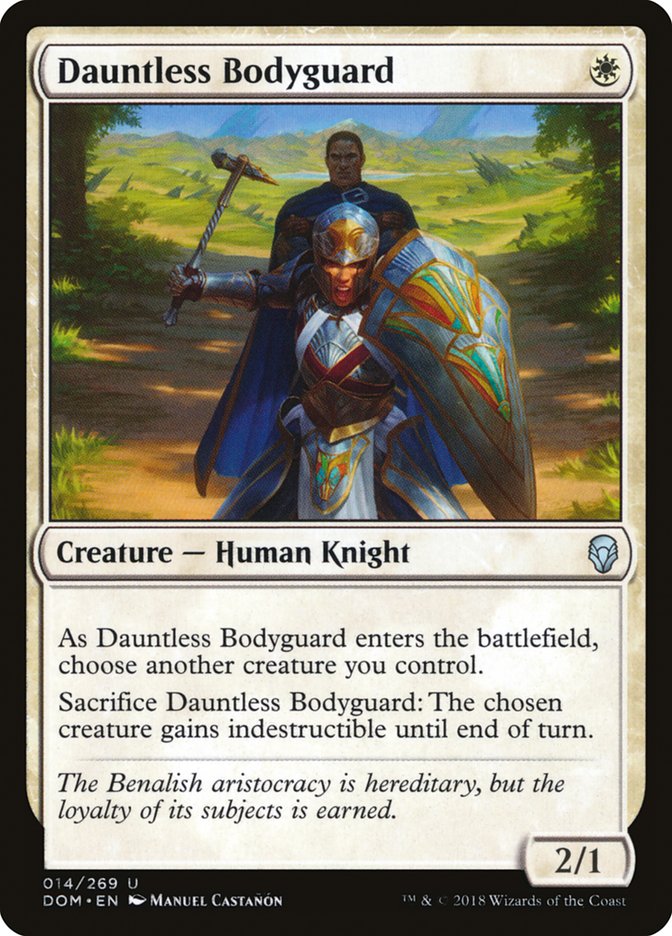“Plains, Skymarcher Aspirant again?! My God, why can’t I play
against just one crappy midrange deck? This matchup is awful. I really
should have added the fourth Fiery Cannonade to the sideboard, this is just
going to be a bloodbath…”
“Conclave Tribunal? Dive Down.”
“Yeah, I got the Shock and the Lava Coil for your flying blockers, send in
for 22.”
“Yeah, I think I got you. Cannonade, swing with my Drakes.”
“I think this matchup is actually just even. If you have the answer for my
Benalish Marshal and protect a Drake, it’s really hard for me to win.”
I went 6-1 against Boros Aggro at Pro Tour Guilds of Ravnica this
past weekend, and I did it with Izzet Drakes. An 11-5 puts me within a hair
of Platinum, and I now (regrettably) must cancel my plans to play the Team
Constructed Open in Las Vegas in order to book a flight to GP Milwaukee and
take a swing at a 12-3 finish. If that fails, it’ll be a last-minute trip
to Shizuoka for their doubleheader GP weekend, and then Portland a week or
so afterwards. I’d really like to make it to SCGCON, so I sincerely hope it
doesn’t come to that. What that means is I’ll be picking up the Drakes
again for an attempt to turn the tables on what looks, on paper, to be a
pretty weak matchup.
How did this happen? First, the list I played at the Pro Tour:
Creatures (11)
Lands (8)
Spells (41)

Yes, two Sailor of Means were in my sideboard.
I won’t lie, at least five percent of the reason I played it was the meme
factor. I mean, the card practically begs you to call it “Sailor of Memes”!
Paulo Vitor Damo da Rosa suggested Dimir Informant instead, and Raptor
Hatchling is another preposterous card that might just get the job done,
but let me tell you: It feels pretty swell when your opponent leads with an
Adanto Vanguard and you just brick wall them with your favorite seaworthy
captain.
Yes, two Deep Freezes were in my sideboard.
How else am I supposed to answer Niv-Mizzet, Parun, Adanto Vanguard, and
Lyra Dawnbringer with equal ease? Beacon Bolt is a stellar card, don’t get
me wrong, but specific threats require creative answers. I’m not ashamed of
my Deep Freezes. Not one bit.
Preparing for this Pro Tour was an interesting experience. It started with
my roommate Andrew Jessup grinding tons of Standard Leagues on MTGO with
Golgari Midrange decks of various flavors in the run-up to GP New Jersey a
few weeks ago. He is my go-to guy when it comes to attacking new formats,
and I was thrilled to play his 75 at the tournament…until I went 1-3
after byes and got extremely discouraged. Golgari Midrange is a solid deck,
don’t get me wrong, but I was interested in something else. Something that
offered me the chance to win occasionally, to paraphrase an Alex Majlaton
refrain.
I got turned on to Izzet Drakes while staying at my good friend Wallace’s
house, practicing online and getting spanked by everything up to and
including Mono-Blue Aggro. Drakes offered me something akin to a Faeries
deck, where one swings an initial tempo deficit into a massive advantage
over a single turn cycle in the midgame. It offered me something akin to a
Delver deck, where a robust cantrip suite gave me increased density of the
good cards and the ability to consistently find my threats. It offered me a
transformational sideboard, with disproportionately high impact slots due
to the fact that I was basically running a 40-card deck. I didn’t have
Cryptic Command or Mistbind Clique, but my threats came with a
Runechanter’s Pike already attached, and protecting them with Dive Down
felt almost as good as protecting a Faerie with Scion of Oona. I enjoyed
playing the deck, and I freely communicated this in my testing team’s
Facebook group.
In addition to my five teammates on Legion (Gerry Thompson, Oliver Tiu,
Oliver Tomajko, Noah Walker, and Jacob Wilson), I had the privilege of
hearing from Eric Froehlich, David Williams, Corey Burkhart, Rob Pisano,
and occasionally Mattia Rizzi as our opinions on the metagame evolved.
And man oh man, did they ever evolve quickly!
From initially being enamored by turboing out and protecting Niv-Mizzet via
Sarkhan, Fireblood, Search for Azcanta, and Dive Down, we moved towards
ways of gaining the upper hand in semi-mirrors by way of The Eldest Reborn,
and we’re well on our way to some super-sweet Grixis Niv-Mizzet monstrosity
(that I could never beat with Drakes in a million years, by the way). Gerry
went over some of these value-laden concoctions in
his article last week
, and though they were rough drafts, they showed a lot of promise in our
early testing. Corey Burkhart, of course being a huge Grixis aficionado,
couldn’t have been happier. For my part, I was content with trying to
out-muscle people in a metagame that looked to be ripe for the king of the
Izzet to claim his throne, but something very interesting happened in the
Magic Online Championship Series event, something that completely upended
the Pro Tour metagame and our carefully wrought plans.
Boros Aggro dominated
the top of the standings at the MOCS event
, putting up the sole 8-0 as well as a disproportionate number of the 7-1
and 6-2 finishers. It swiftly took over the Standard Leagues on MTGO, and
my win percentage took a just-as-swift dive shortly thereafter. Our
Niv-Mizzet decks simply couldn’t compete with these turn-4 kills, these
resilient Adanto Vanguards, these Heroic Reinforcements to hammer home the
last few points after a Ritual of Soot or a Golden Demise. My Izzet Drakes
deck was flailing, so I picked up Boros Aggro on the Monday after GP
Atlanta, wondering if I was going to have to call an audible and play
another mindless aggro deck.
Things started out promising, with ecstatic posts in our testing group
about how people were dominating opponents, winning through piles of
removal, crushing with Experimental Frenzy in the post-sideboard games, and
just generally having a grand old time with white-based aggro. I mentally
prepared myself to register fourteen basic Plains and try to win with a
bunch of Savannah Lions.
Then things started to fall apart. Oliver Tomajko began reporting a string
of repeated 1-3 and 2-3 finishes in Leagues. Everyone simultaneously
started discussing playing Mono-Red Aggro as a solution, with Goblin
Chainwhirler and friends lining up particularly well against a deck full of
1/1 and 2/1 creatures. I went back to my old ways, losing with literally
everything. I couldn’t get three wins in a League if my life depended on
it!
- 0-3 with Mono-Red
- 2-3 with Boros
- 2-3 with Drakes
- 2-3 with a different build of Drakes
- 1-3 with Boros
I was only beating the rogue decks, the untuned three-color monstrosities
that people test in the leagues in order to quickly disprove their idea. I
was losing to good matchups and was completely lost. I started to ask my
teammates for advice. Time was running out on deck submission, and I was
considering audibling back to Golgari. Rob, Jacob, and Oliver Tiu said they
had an adequate list, but I’d already been stung once, hard.
On Wednesday morning, the day decklists were due, Oliver Tomajko threw
another curveball by telling me that he had seen a sliver of a screenshot
from Quinn Kiefer that seemed to include Tatyova, Benthic Druid, Stitcher’s
Supplier, and a few corners of cards that were most likely Bone Dragon, a
creature that cost 1G, and possibly a Muldrotha, the Gravetide.
I wasn’t
interested in playing some absurd brew that we would have to
reverse-engineer from a sliver of a screenshot, but it was tempting enough
to try to figure out what kind of deck this was to get a better grasp of
the metagame. We spent a few hours asking around trying to figure out if
anyone had played against this deck in leagues, but everything came up dry.
We concluded that even if the deck was real, it probably wasn’t very good
against Boros Aggro or Mono-Red Aggro, so we would disregard it and just
pick one of our team’s decks.
I was sitting in young Hayden Bedsole’s apartment in Birmingham, Alabama on
the night of decklist submission, with nothing but a bunch of burned MTGO
tickets to show for my testing process. I had nothing left but to listen to
my own advice, the same advice I give every young new Pro Tour competitor
who wants to glean a tip for what to play on the game’s biggest stage:
you know, play what you enjoy. Treat it like a GP, and you’ll do fine. Do
not overthink it. If you aren’t fairly convinced that you’ve broken the
format, stay in your comfort zone and play a solid deck well.
With that in mind, I picked up Izzet Drakes for one last league, and after
starting off 0-2, I battled back for that sweet, sweet Treasure Chest. Then
I quickly went over to the decklist submission website before I could
change my mind and registered Sailor of Means for the Constructed portion
of the Pro Tour. It probably should have been Dimir Informant, to be frank.
The weird lull period between decklist submission and Pro Tour time passed
quickly, almost a calm between two storms. I was fully expecting to bomb
out of the event, but fortune intervened.
The first day saw me with a respectable, but not exceptional record of 2-1
in Draft, 3-2 in Constructed (losing to Reid Duke and one of my four Boros
Aggro opponents). The second day was another 2-1 Draft, then an impressive
4-1 in Constructed (losing to Jeskai Control and defeating three more Boros
Aggro opponents, including two of the better players to pick up a Magic
card, Paulo Vitor Damo da Rosa and Mike Sigrist).
The matchup against Boros Aggro isn’t a slam dunk by any means, but it’s
eminently winnable. My deck coughed up solid hands more often than not, my
opponents stumbled a few more times than me, and I peeled a key Fiery
Cannonade once or twice. If the matchups against the rest of the field are
solid-to-favorable, Izzet is where I want to be in Standard for the
foreseeable future.
Here’s how I sideboarded against Boros, which is the only matchup for which
I had a consistent sideboard strategy and a coherent gameplan. The other
matchups are so dependent on specifics of opposing lists that I just try to
wing it, considering what threats they’ll still have in their decks in
games 2 and 3.
Out:


In:


You win by sticking a Drake, holding the fort for a turn or two, bricking
their offense with the large flying bodies while you clean up any Benalish
Marshals with Lava Coil. You frequently need to protect against their
single Conclave Tribunal with Dive Down, but once you land the second
Drake, you’ve turned the corner and it’s on them to squeeze through the
last few points of damage with a Heroic Reinforcements before you attack
for a clean twenty in the air.
I can’t wait to experiment with Jeskai Drakes (Team Face to Face Games’
sweet brew with Deafening Clarion as a maindeckable sweeper that also gains
massive chunks of life) as well as a Phoenix-free version of the deck with
maindeck Search for Azcanta and Niv-Mizzet, Parun to fight control.
Standard continues to excite, and I guarantee that we’re not going to be
dominated by Boros Aggro for long. The deck is exploitable enough to be a
metagame call, but not a persistent “best deck” in the format. I mean, if I
figured out how to get a few matches off the aggressive white deck, you can
do the same. It just takes a few creative solutions.


